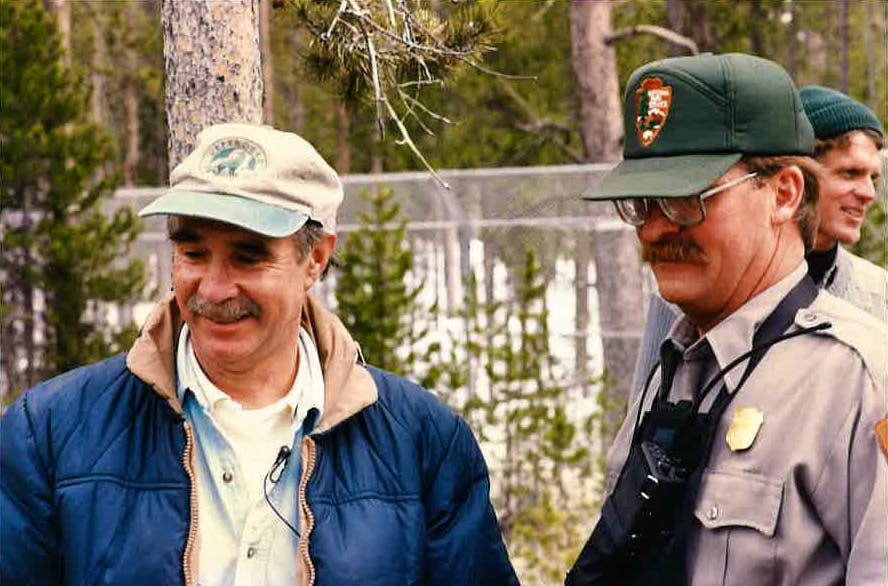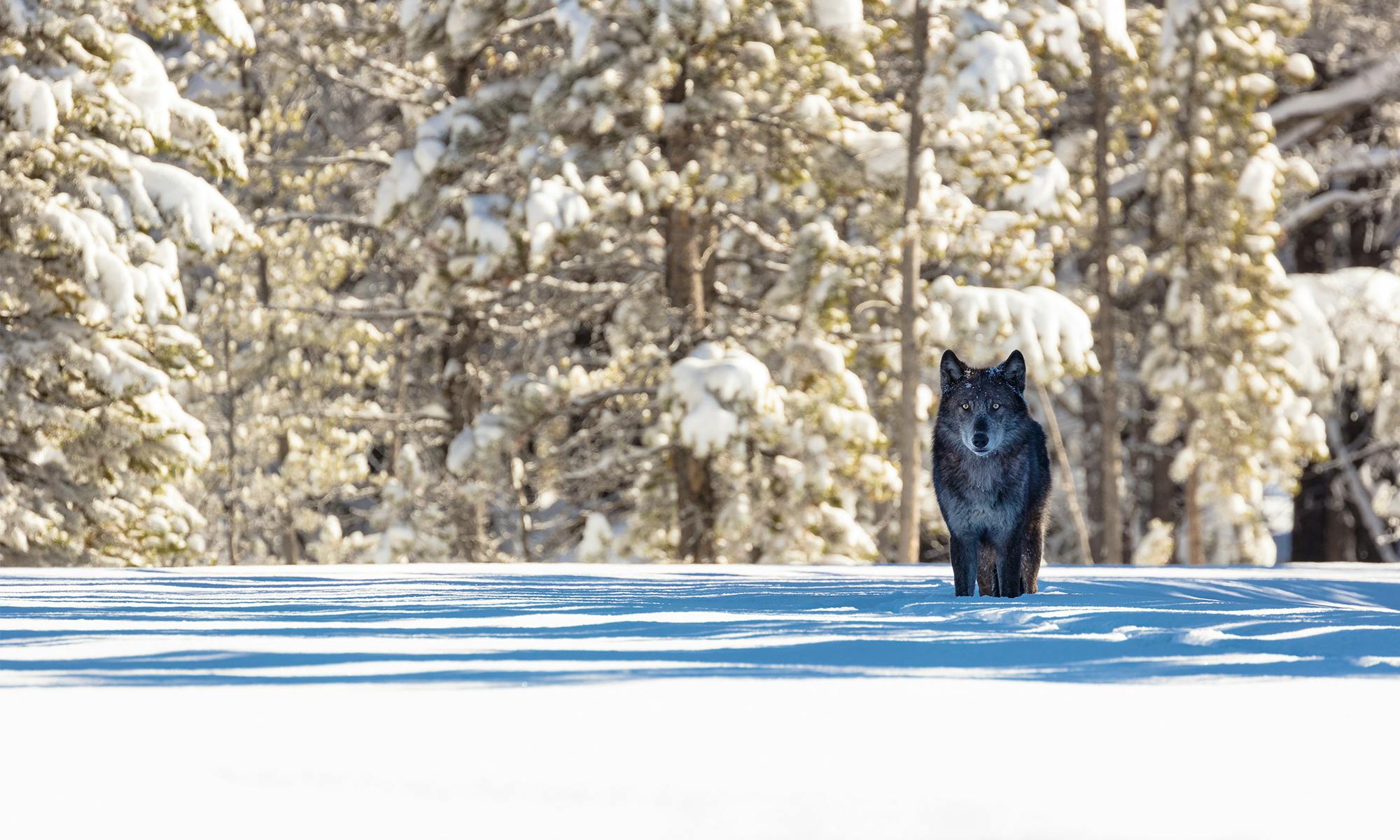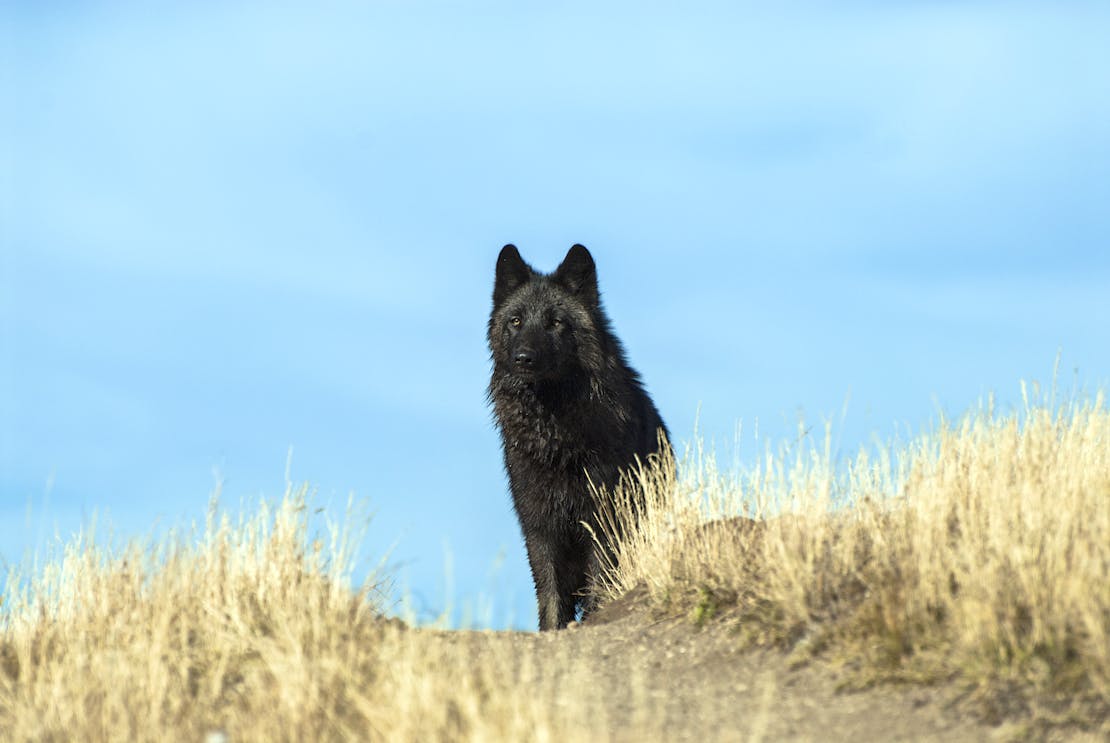Twenty-five years ago, we changed the path of Yellowstone National Park for the better. One action changed the soil, the growth of plants and grasses, and the diversity and populations of wildlife throughout the park. It even changed the way the rivers flow. And all we did was bring back wolves.
On January 12, 1995, a motorcade of two park service patrol cars and a truck hauling a horse trailer made their way toward Yellowstone National Park. They stopped at the stone Roosevelt Arch so everyone could take photos under the inscription – “Yellowstone National Park. Created by act of Congress on March 1, 1872. For the benefit and enjoyment of the people.”
Inside the trailer were eight gray wolves from Canada. Getting them there was one of our most extraordinary achievements – to right the wrongs that occurred 70 years earlier.
In a little over a decade – from 1914 to 1926 – we eliminated 136 wolves that lived within the park. This was before we understood the connectedness of wildlife – before we knew the value of intact ecosystems. Before we knew about climate change and biodiversity and loss. Wiping out an apex predator in the park turned out to be a major mistake.
Seventy years without wolves changed Yellowstone – songbirds left, elk and coyotes became overpopulated and beavers disappeared. Elks overgrazed the land and trees, such as willow and aspen. Without those trees, songbirds began to decline. Beavers could no longer build their dams, and streams began to erode and degrade the conditions willow trees needed to grow. Without beaver’s dams and the shade from trees and plants, water temperatures were too high for cold water fish.
In 1973, the Endangered Species Act was passed, and the gray wolf was one of the first species listed as endangered, mandating protection and recovery planning. The long path to recovery in the United States for the wolf had begun. But it was a slow one. It took decades for Americans to come around on wolf reintroduction.
Defenders of Wildlife played a critical role in the reintroduction of gray wolves to the Northern Rockies. Defenders advocated for return of wolves in the midst of proposals, scoping periods, environmental impact statements, public comment periods and draft rulemakings. Many years of advocacy was needed to change people’s misperceptions to ensure the future of the wolf in the U.S.


With a lot persistence, it happened. Then-Secretary of the Interior Bruce Babbitt, then-Director of U.S. Fish and Wildlife Service Mollie Beattie and then-Superintendent of Yellowstone National Park Mike Finley, set the first wolf crate on the ground in Yellowstone National Park 25 years ago.
The changes in the park have been exciting and significant. Wolf reintroduction caused unanticipated change in Yellowstone. It rebalanced elk and deer populations, allowing the willows and aspen to return to the landscape. The end to overgrazing stabilized riverbanks and rivers recovered and flowed in new directions. Songbirds returned as did beavers, eagles, foxes and badgers. And, while the restoration of wolves in Yellowstone has cost about $30 million total, wolf ecotourism brings in $35 million annually.
This is not only a celebration of wolves and the success of the Endangered Species Act, it is a victory for humans and our planet. The mistake we originally made with the gray wolf was a big one, but our effort to correct that mistake is a beacon of hope.
We face sobering challenges in sustaining life on our planet. The Arctic is at a tipping point, so is the Amazon. We’ve lost 3 billion birds in North America and 1 million species are threatened with extinction within decades. But the gray wolf proves that we can evolve. Over the past 25 years, sustained by the Endangered Species Act and supported by changing public attitudes, wolves have returned to their historical range in the Northern Rockies and the Pacific Northwest, restoring balance to those ecosystems. And the story is not over. We have exciting opportunities to restore gray wolves to Colorado and California, to recover Red Wolves in the Southeast and to rebuild Mexican gray wolf populations in the Southwest.
Wolves have let us rewrite the history of who we are as people. They are a symbol of the America we want to create – where we can coexist peacefully with wildlife – for their benefit and ours.











